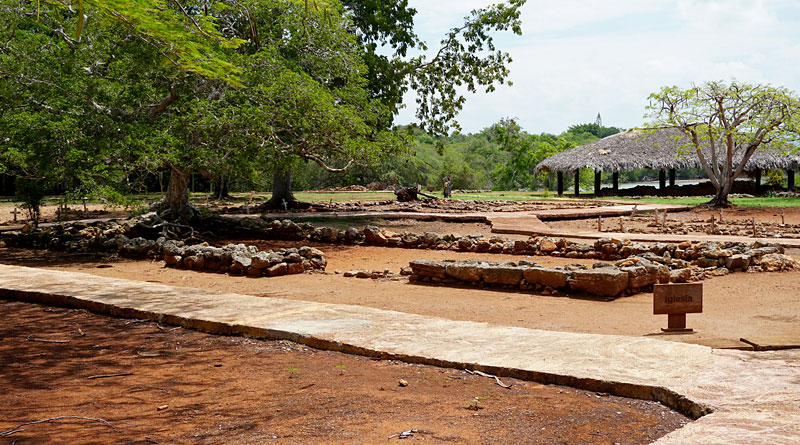La Isabela in Puerto Plata Province, Dominican Republic was the first Spanish town in the Americas. The site is 42 km west of the city of Puerto Plata, adjacent to the village of El Castillo. The area now forms a National Historic Park.
La Isabela was founded by Christopher Columbus during his second voyage in December 1493, and named after Queen Isabella I of Castile. The first attempt of a permanent settlement, the fort of La Navidad, established by Columbus a year earlier to the west of La Isabela, in what is present day Haiti, had been totally destroyed by the native Taíno people when he returned. La Isabela was abandoned by 1500. The only earlier European settlements in the Americas were settlements by the Vikings in Greenland and Newfoundland which dated from 500 years earlier.
La Isabela was established to search for precious metals. When little gold was found, Columbus proceeded to enslave the people of the island.
La Isabela was struck by the first known epidemic to spread from Europe to the New World in 1493 and two of the earliest North Atlantic hurricanes observed by Europeans in 1494 and 1495.
Hunger and disease soon led to mutiny, punishment, disillusion, and more hunger and disease. It reached the point where a group of settlers, led by Bernal de Pisa, attempted to capture and make off with several ships and go back to Spain. La Isabela barely survived until 1496 when Columbus decided to abandon it in favor of a new settlement, now Santo Domingo.
